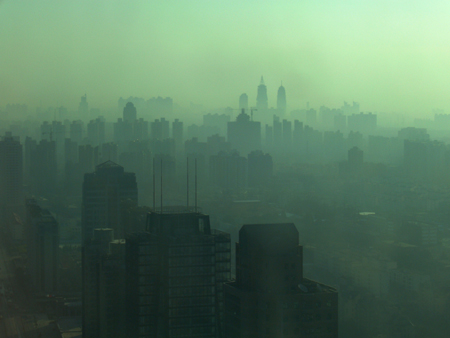
(Photo Credit: iStockphoto.com)
Energy consumption in China grew by 136 percent over the past decade, raising concerns about energy supplies, human health and environmental problems. China has taken steps to green the smog, but problems are just at the tip of the iceberg.
In 2005, China passed the renewable energy law to cut pollution and energy intensity. Although initial targets of drawing 15 percent of total energy from renewables by 2020 were silently cut back in 2009, it began to see the results.
Goals for renewables capacity were often exceeded and such targets blew life into China's wind industry. The country is now the biggest manufacturer and installer of turbines in the world, and has fuelled the rise of some of the world's biggest renewables equipment makers.
China also introduced a carbon emissions reduction target for the first time. Until most recently, it has prioritised economic growth and resisted any efforts to cap its carbon emissions.
"The targets are very ambitious in global terms," says Antony Froggatt, a climate and environment policy expert at Chatham House, a think tank in London which focuses on international affairs. But because the country's imports of coal, oil and gas are increasing each year, he says, the goals "are crucial for China to become competitive on the global market".
There are also further plans to impose a cap of 4.2 billion tonnes of coal equivalent by 2015. Trials of carbon trading regimes will begin next year in seven provinces and cities in China, and a carbon tax is likely to be draft into Climate Change Law.
China's clean energy policies, however, are still a work in progress. The country's rumoured cap on energy use reflects the strictures of a command-and-control economy, and a nationwide scheme does not look likely within the next five years. Carbon tax is also not expected to impact emissions.
The biggest barrier to the pursuit of greener growth, however, lies in China's economy structure. Despite ending the year with more total investment than any other nation for the third consecutive year, the country has found it difficult to clean up its energy mix.
Heavy industry and the abundance of cheap, dirty energy source in China have hindered progress, with its investments being held in the state-dominated industrial sector that consumes vast amount of electricity and resists government attempts to slim it down.
In China, where the world's third-largest coal reserves are held, coal-industry centres could be doubly harmful for the country's energy efficiency and carbon-intensity plans. Local governments in the West further exacerbated the situation by capitalising on the coalmining boom.
While the EIU expects China to improve its solar and hydropower capabilities, the government has treated incineration as a form of renewable energy. With 1.3 billion people producing over a quarter of the world's rubbish, the central government has shown strong support for incineration.
A new rush of investment looks likely in pursuit of government targets, with China's electricity demand expected to grow by 78 percent over the next few years. Converting waste to energy seems to present itself as the perfect solution, but the green efforts are attempts at disguising a bigger problem.
China's incinerators are often laced with coal, and plant operators have admitted to using as much as 70 percent coal in the wastefeed. Health costs of coal dependence are becoming increasingly obvious, especially for people living nearby existing plants.
The solution it seems lies in China's people. Public opposition and citizens' demands for more transparency and better monitoring may stand a greater chance of forcing change.
But until then, the strong demand for fossil fuels means that carbon emitted from burning fuel will rise by over 40 percent by 2020. Although China will grow greener in relative terms, judged purely on how much carbon it emits, the opposite will be true.
Grey will remain the dominant colour.

A Greener Shade of Grey: A Special Report on Renewable Energy in Chinawas published by the Economist Intelligence Unit on 24 May 2012. The articles collected in this report examine China's progress across a number of alternative energy forms, presenting the EIU's view of what the future holds for each.
BY : Economist Intelligence Unit